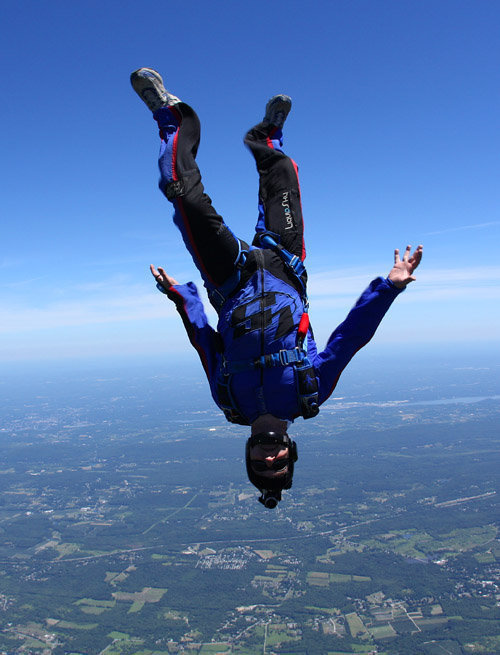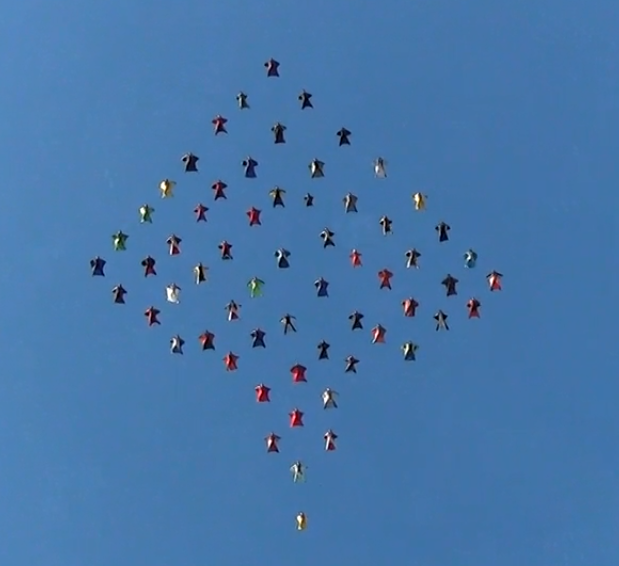QuoteQuoteWe've got plenty of knowledge about ablation and accretion, etc. The interaction of these physical forces - therein lies the lack of understanding.
I don't completely understand the process of food digestion, but I know that if I eat too much I will get fat.
I also know that if I were to, say, break my legs, I could likely get fat.
Measuring calories in, I could likely eat fewer calories than when I had two pristine femurs. But since my calories out would be much less, it would not be the case that I am fat because I increased my calorie intake.
The balance can be tilted in two ways: (1) increase calories in; or (2) decrease calories out.
This is why the climate equation has energy in on the left and energy out on the right to get to equilibrium.
The body mass equation has calories in on the left and calories out of the right.
"Get some exercise you fat fuck!"
"Quit eating all those pork rinds you fat fuck."
Why, digestive processes are easy to point to. Weight gain does not necessarily implicate a change in that digestive equilibrium. Food in need not change to experience profound effects on weight.
My wife is hotter than your wife.
kallend 2,106
QuoteQuoteQuoteWe've got plenty of knowledge about ablation and accretion, etc. The interaction of these physical forces - therein lies the lack of understanding.
I don't completely understand the process of food digestion, but I know that if I eat too much I will get fat.
I also know that if I were to, say, break my legs, I could likely get fat.
Measuring calories in, I could likely eat fewer calories than when I had two pristine femurs. But since my calories out would be much less, it would not be the case that I am fat because I increased my calorie intake.
The balance can be tilted in two ways: (1) increase calories in; or (2) decrease calories out.
This is why the climate equation has energy in on the left and energy out on the right to get to equilibrium.
The body mass equation has calories in on the left and calories out of the right.
"Get some exercise you fat fuck!"
"Quit eating all those pork rinds you fat fuck."
Why, digestive processes are easy to point to. Weight gain does not necessarily implicate a change in that digestive equilibrium. Food in need not change to experience profound effects on weight.
Who said it did? "Too much" is simply too much for the circumstances.
The only sure way to survive a canopy collision is not to have one.
John - you've got yourself stuck.
My wife is hotter than your wife.
kallend 2,106
QuoteSo we've got too much heat energy for the ciircumstances?
John - you've got yourself stuck.
No, I am quite skinny and can get out of my chair just fine.
The only sure way to survive a canopy collision is not to have one.
nerdgirl 0
QuoteI wonder if we'll all still be arguing about this when we are fighting over dwindling water supplies ala Mad Max...
http://e360.yale.edu/content/feature.msp?id=2139
Retreat of Andean Glaciers Foretells Global Water Woes
Thanks for posting that. It’s a neat, short piece, imo.
Even if one completely disregards the anthropogenic climate change explanation, i.e., put the causal force aside for a moment, glaciers around the world are receding at unprecedented rates. (Yes, there are rare exceptions; that study is looking at the top of the glaciers not the terminus (bottom) btw.)
There are likely to be consequences of receding glaciers like the ones outlined in the article relating to water shortages, which particularly affect agricultural-intensive and developing nations.
I’m more familiar with the situation in the Himalayas, in which melting glaciers are filling in behind the ‘receded’ glacier creating moraine lakes that have already produced outburst floods. The Tibetan Zhangzhangbo glacial lake outburst flood (GLOF) caused extensive infrastructural damage and nearly US$3M in losses. The Luggye Tso GLOF in Bhutan in 1994 damaged agricultural land, destroyed crops, and resulted in lives lost. A GLOF from the newly formed Dig Tsho glacial lake in Nepal destroyed 14 bridges and caused US$1.5M worth of damage was caused to the nearly completed Namche Small Hydropower Plant.
So there are monetize-able losses due to receding glaciers.
If receding glaciers are the result of purely natural forces, then it’s just bad luck of geography.
Regardless of the cause, I thankful that for the accident of geographical luck that we have the Great Lakes and all that fresh water.
/Marg
Act as if everything you do matters, while laughing at yourself for thinking anything you do matters.
Tibetan Buddhist saying
Quotehttp://www.iceagenow.com/List_of_Expanding_Glaciers.htm
As someone else already said, it would be nice to see a little more hard data to go along with his conclusions.
But even if we concede that some glaciers are increasing in size, how does that contradict the proponents of global warming? The science does not say that all parts of the globe will be uniformly warmed. Instead, it says that the effect will be for some portions to become abnormally warmer while others will become colder. But that sucks for people in those warmer regions who depend on glaciers for their drinking water.
mnealtx 0
QuoteA new modeling study from NASA confirms that when tiny air pollution particles we commonly call soot – also known as black carbon – travel along wind currents from densely populated south Asian cities and accumulate over a climate hotspot called the Tibetan Plateau, the result may be anything but inconsequential.
In fact, the new research, by NASA’s William Lau and collaborators, reinforces with detailed numerical analysis what earlier studies suggest: that soot and dust contribute as much (or more) to atmospheric warming in the Himalayas as greenhouse gases. This warming fuels the melting of glaciers and could threaten fresh water resources in a region that is home to more than a billion people.
Lau explored the causes of rapid melting, which occurs primarily in the western Tibetan Plateau, beginning each year in April and extending through early fall. The brisk melting coincides with the time when concentrations of aerosols like soot and dust transported from places like India and Nepal are most dense in the atmosphere.
“Over areas of the Himalayas, the rate of warming is more than five times faster than warming globally,” said William Lau, head of atmospheric sciences at NASA’s Goddard Space Flight Center in Greenbelt, Md. “Based on the differences it’s not difficult to conclude that greenhouse gases are not the sole agents of change in this region. There’s a localized phenomenon at play.”
I love you, Shannon and Jim.
POPS 9708 , SCR 14706
kallend 2,106
QuoteI can't reach the nasa page listed (url "http://www.nasa.gov/topics/earth/features/himalayan-warming.html"]Clicky[/url]), but here's a bit of interesting news via wattsupwiththat.com - emphasis mine:
QuoteA new modeling study from NASA confirms that when tiny air pollution particles we commonly call soot – also known as black carbon – travel along wind currents from densely populated south Asian cities and accumulate over a climate hotspot called the Tibetan Plateau, the result may be anything but inconsequential.
In fact, the new research, by NASA’s William Lau and collaborators, reinforces with detailed numerical analysis what earlier studies suggest: that soot and dust contribute as much (or more) to atmospheric warming in the Himalayas as greenhouse gases. This warming fuels the melting of glaciers and could threaten fresh water resources in a region that is home to more than a billion people.
Lau explored the causes of rapid melting, which occurs primarily in the western Tibetan Plateau, beginning each year in April and extending through early fall. The brisk melting coincides with the time when concentrations of aerosols like soot and dust transported from places like India and Nepal are most dense in the atmosphere.
“Over areas of the Himalayas, the rate of warming is more than five times faster than warming globally,” said William Lau, head of atmospheric sciences at NASA’s Goddard Space Flight Center in Greenbelt, Md. “Based on the differences it’s not difficult to conclude that greenhouse gases are not the sole agents of change in this region. There’s a localized phenomenon at play.”
OK, carbon from burning fossil fuels is a doubly bad actor.
The only sure way to survive a canopy collision is not to have one.
mnealtx 0
I love you, Shannon and Jim.
POPS 9708 , SCR 14706
Yes - double whammy.
My wife is hotter than your wife.
kallend 2,106
QuoteBlack carbon is one of those substances that does give its own whammy. While many aerosols have a tendency to increase albedo, black carbon actually decreases it - absorbing heat and light energy instead of reflecting it. It also isn't a great aerosol for condensing water vapor.
Yes - double whammy.
When I was a kid and coal fires were common (OK, back in the stone age) I can recall people putting chimney soot on snow to melt it. (Soot was free, salt cost money).
The only sure way to survive a canopy collision is not to have one.
QuoteI can recall people putting chimney soot on snow to melt it.
I saw something rather amusing today. The city where I live put up a radar device which flashes your speed as you approach it (I have no idea if it is also a photo radar device, I am not dumb enough to speed by this device), but what was funny that it is powered by solar panels and ROFLMAO ... the solar panel was covered in snow so the radar device was not working today. Now don't get me wrong I think we should use more solar and wind energy to supplement existing power grids, but wind can not power an entire city and what good are your solar panels when they are covered by snow? Not everyone has the luxury of being powered by Hydro. Coal is a necessary evil. I say go Nuclear and eliminate the dirty coal, but the granola eco freaks have a ape shit when you talk nuclear. It's as if the eco freaks want us all to live in the stone age. Fine and dandy if you live in a warm climate, but it is just not going to happen when you live up north.
Try not to worry about the things you have no control over


.thumb.jpg.4bb795e2eaf21b8b300039a5e1ec7f92.jpg)





Actually all the glaciers have been "the fad."
>AGW would be mild in the tropics, and would have a substantial
>probability of increasing air moisture (warm air holds more water (which is
>why humidity is relative (and true moisture content is seen with dew
>point))) and thus increasing precipitation.
True in some places, not in others. Here in Socal, for example, rising temperatures will result in less rainfall, since land warms up faster than water does.
Hence, what you would expect to see is most glaciers to be receding, with a few in stasis (primarily ocean terminus glaciers) and a few increasing in mass. Which is what we're seeing.
Share this post
Link to post
Share on other sites